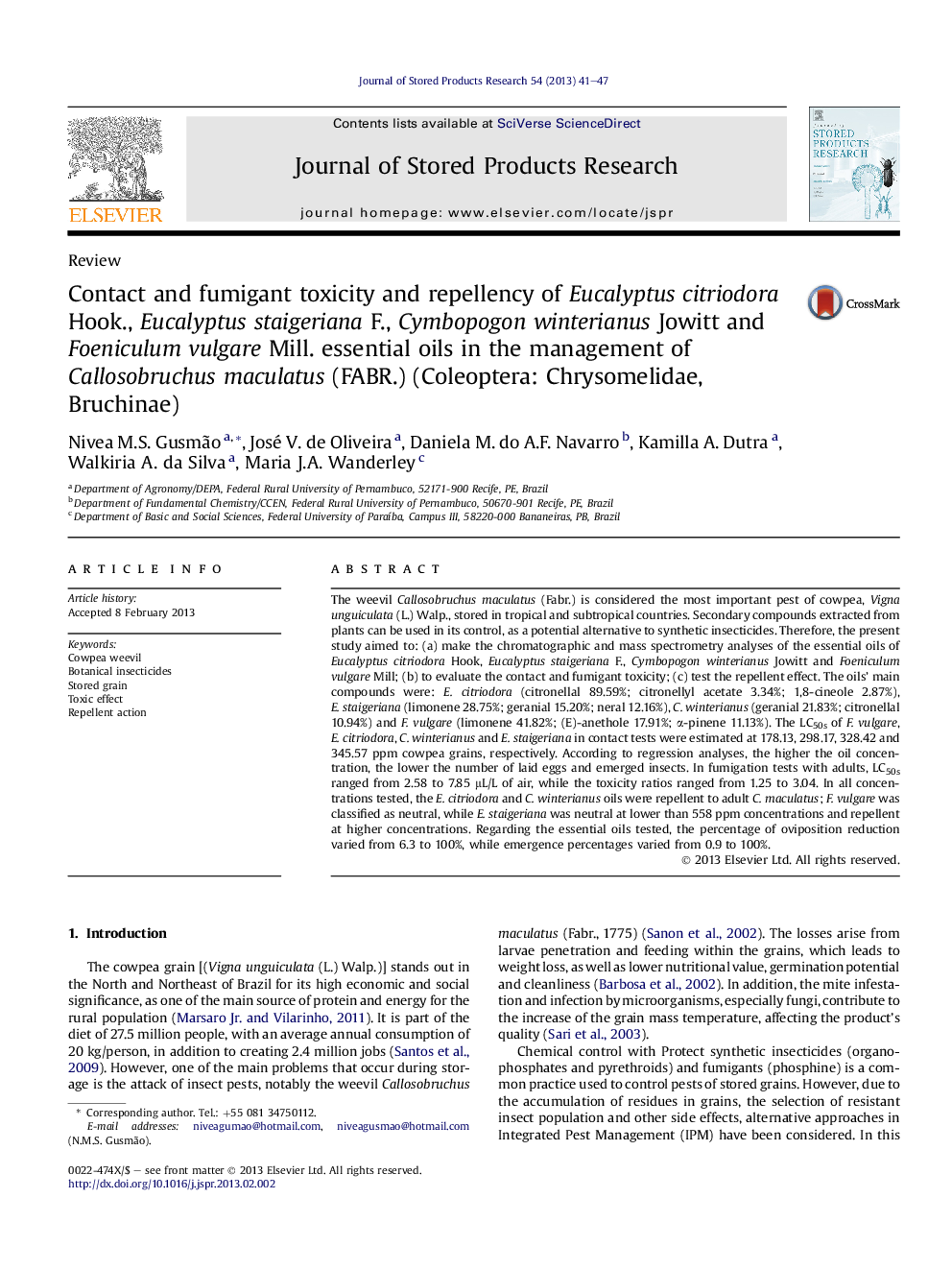| کد مقاله | کد نشریه | سال انتشار | مقاله انگلیسی | نسخه تمام متن |
|---|---|---|---|---|
| 4517104 | 1624934 | 2013 | 7 صفحه PDF | دانلود رایگان |

• The use of essential oils is an alternative for the control of stored grains pests.
• Fumigant effect is an effective strategy to storage units.
• Major components are usually responsible for insecticidal action of essential oils.
• The presence of Callosobruchus maculatus in stored grain causes qualitative and quantitative losses in the grains.
The weevil Callosobruchus maculatus (Fabr.) is considered the most important pest of cowpea, Vigna unguiculata (L.) Walp., stored in tropical and subtropical countries. Secondary compounds extracted from plants can be used in its control, as a potential alternative to synthetic insecticides. Therefore, the present study aimed to: (a) make the chromatographic and mass spectrometry analyses of the essential oils of Eucalyptus citriodora Hook, Eucalyptus staigeriana F., Cymbopogon winterianus Jowitt and Foeniculum vulgare Mill; (b) to evaluate the contact and fumigant toxicity; (c) test the repellent effect. The oils' main compounds were: E. citriodora (citronellal 89.59%; citronellyl acetate 3.34%; 1,8-cineole 2.87%), E. staigeriana (limonene 28.75%; geranial 15.20%; neral 12.16%), C. winterianus (geranial 21.83%; citronellal 10.94%) and F. vulgare (limonene 41.82%; (E)-anethole 17.91%; α-pinene 11.13%). The LC50s of F. vulgare, E. citriodora, C. winterianus and E. staigeriana in contact tests were estimated at 178.13, 298.17, 328.42 and 345.57 ppm cowpea grains, respectively. According to regression analyses, the higher the oil concentration, the lower the number of laid eggs and emerged insects. In fumigation tests with adults, LC50s ranged from 2.58 to 7.85 μL/L of air, while the toxicity ratios ranged from 1.25 to 3.04. In all concentrations tested, the E. citriodora and C. winterianus oils were repellent to adult C. maculatus; F. vulgare was classified as neutral, while E. staigeriana was neutral at lower than 558 ppm concentrations and repellent at higher concentrations. Regarding the essential oils tested, the percentage of oviposition reduction varied from 6.3 to 100%, while emergence percentages varied from 0.9 to 100%.
Journal: Journal of Stored Products Research - Volume 54, July 2013, Pages 41–47